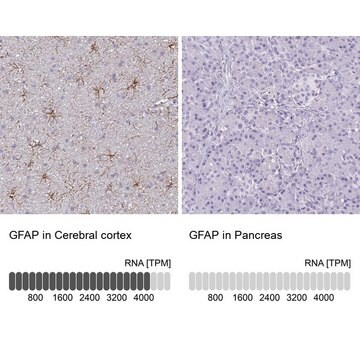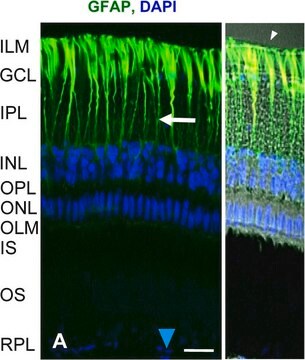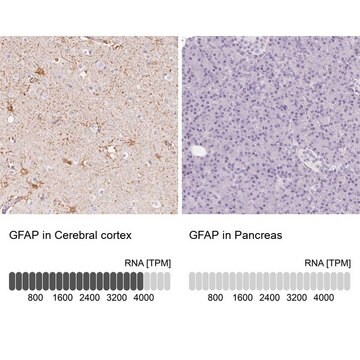AB9598
Anti-Glial fibrillary acidic protein δ Antibody
serum, Chemicon®
Synonym(s):
GFAPdelta
Select a Size
Select a Size
About This Item
Recommended Products
biological source
rabbit
Quality Level
antibody form
serum
antibody product type
primary antibodies
clone
polyclonal
species reactivity
human
should not react with
mouse, rat
manufacturer/tradename
Chemicon®
technique(s)
immunohistochemistry: suitable (paraffin)
western blot: suitable
NCBI accession no.
General description
Specificity
Immunogen
Application
Neuroscience
Neuronal & Glial Markers
Immunohistochemistry: 1:500 incubated for 36-48 hours at 2-8°C on paraffin embedded tissue sections. It is suggested that the tissue be treated with microwave antigen retrieval prior to staining.
Optimal working dilutions must be determined by the end user.
Linkage
Physical form
Storage and Stability
Legal Information
Disclaimer
Not finding the right product?
Try our Product Selector Tool.
recommended
Storage Class Code
10 - Combustible liquids
WGK
WGK 1
Flash Point(F)
Not applicable
Flash Point(C)
Not applicable
Certificates of Analysis (COA)
Search for Certificates of Analysis (COA) by entering the products Lot/Batch Number. Lot and Batch Numbers can be found on a product’s label following the words ‘Lot’ or ‘Batch’.
Already Own This Product?
Find documentation for the products that you have recently purchased in the Document Library.
Our team of scientists has experience in all areas of research including Life Science, Material Science, Chemical Synthesis, Chromatography, Analytical and many others.
Contact Technical Service





